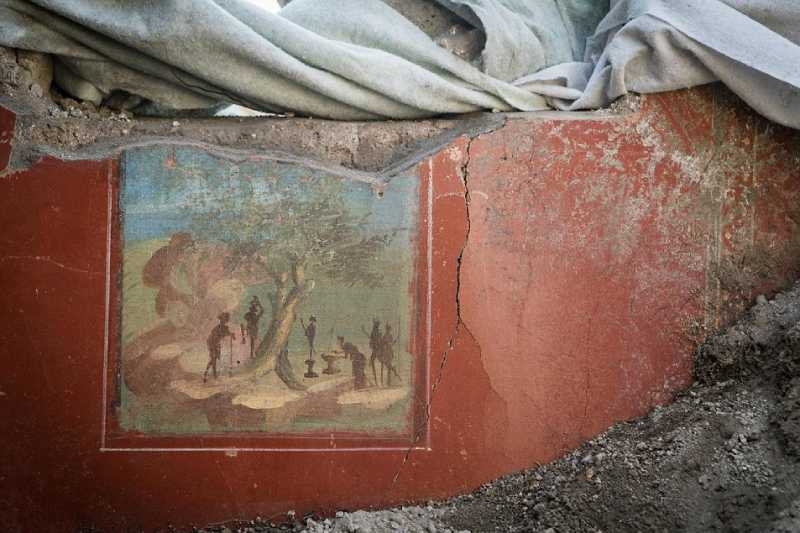Archaeologists uncover new finds at Rome’s Pompeii
Archaeologists have excavated the house of a ‘wealthy and cultured’ man who lived in the ancient Roman city of Pompeii that was buried by ash and rock spewed by the volcanic eruption of Mount Vesuvius in 79 AD. Mount Vesuvius, on the west coast of Italy, is the only active volcano in continental Europe and is thought to be one of the most dangerous volcanoes in the world.
The eruption belched out a lethal combination of toxic sulphurous gas and hundreds of tonnes of volcanic ash that buried the cities of Pompeii, Oplontis, and Stabiae overnight. Seismic activity from Vesuvius also triggered a deadly mudflow, wiping out the ancient city of Herculaneum. Conservation work is now underway and new finds have been uncovered at a private house known as the ‘House of Jupiter’ (Casa di Giove) in the Regio V part of the ancient city.
The house was already partly excavated between the 18th and 19th centuries but archaeologists have uncovered yet more frescoes and ornate remains that give us an insight into everyday life thousands of years ago. The 2,000 year-old works of art are in good condition, despite surviving one of the most devastating volcanic eruptions in written history. The name of the house comes from a small picture depicting Jupiter found on a shrine placed in the garden. It was believed to belong to a wealthy and educated man and is decorated in first Roman style (primo stile pompeiano).
Related Posts

